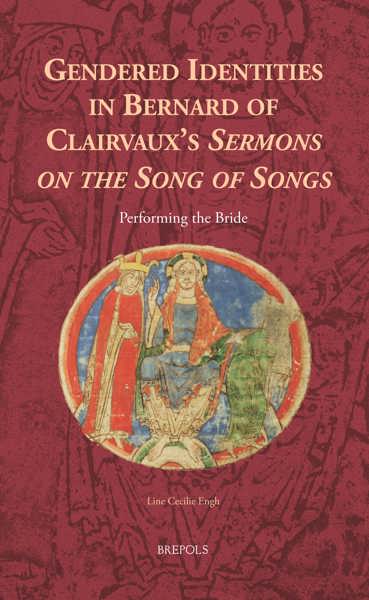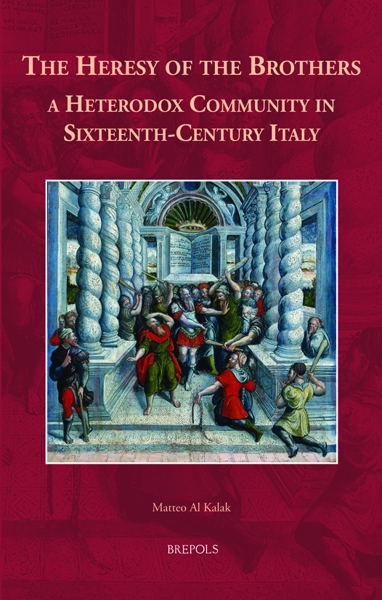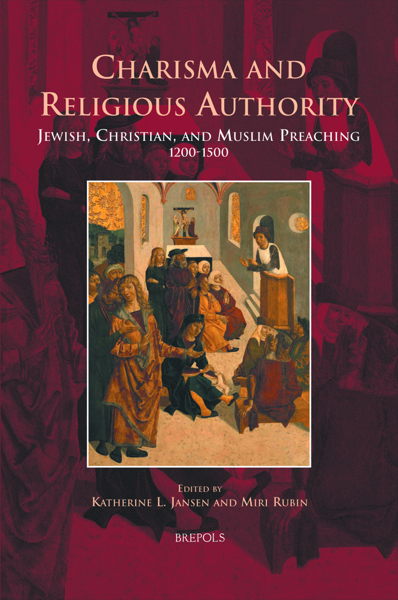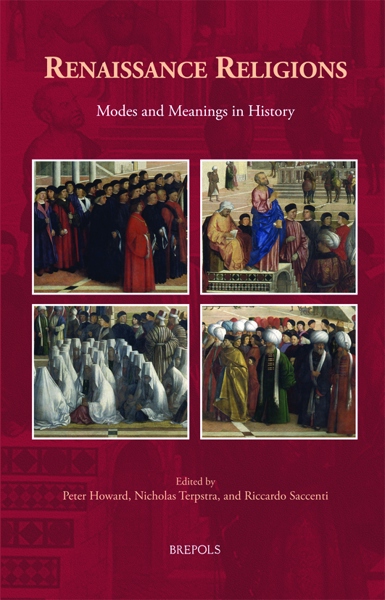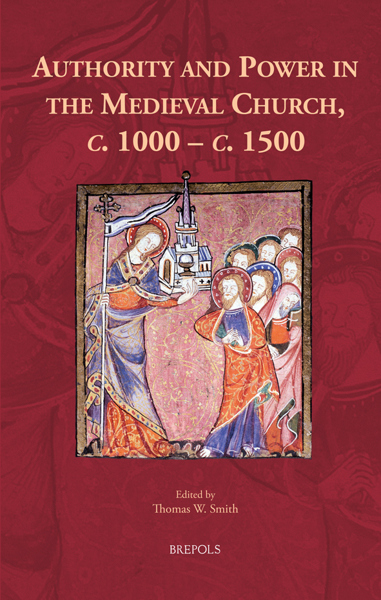
Gendered Identities in Bernard of Clairvaux’s 'Sermons on the Song of Songs'
Performing the Bride
Line Cecilie Engh
- Pages: 446 p.
- Size:156 x 234 mm
- Illustrations:10 tables b/w.
- Language(s):English
- Publication Year:2014
- € 120,00 EXCL. VAT RETAIL PRICE
- ISBN: 978-2-503-55003-9
- Hardback
- Available
- € 120,00 EXCL. VAT RETAIL PRICE
- ISBN: 978-2-503-55805-9
- E-book
- Available
"In spite of the voluminous literature on medieval Christian allegories on the Song of Songs, this is the only study I know of that fully grapples with the significance of the obviously gendered identities. (...) Engh is to be congratulated for taking this issue so seriously, and, especially, for making sense of it in its own context, not just as a vehicle for modern critical gender theory. For this reason alone, her book will be of interest to scholars far beyond the cozy world of experts on medieval exegesis, although scholars of the Bible in the Middle Ages will also find this interpretation enlightening and, I hope, challenging. " (E. Ann Matter, in: The Medieval Review, 15.06.28)
« Cette importante étude, issue d’une thèse de doctorat, s’appuie sur une lecture minutieuse et précise (…) La thèse est intéressante et l’argumentation est convaincante. On retiendra surtout la richesse des analyses du texte (…) » (Anne Paupert, in Francia-Recensio, 2, 2017)
In this analysis of Bernard of Clairvaux’s famous Sermons on the Song of Songs, gendered imagery is treated, for the first time, as an interpretative key. Through close readings of Bernard’s text and through the rich array of recent medieval studies on sex and gender, this book challenges familiar interpretations of body, gender, and asceticism, disrupting the commonplace view of medieval monasticism as desexualized and un-gendered.
Bernard not only interprets, but also embodies or actualizes the figure of the bride, generating images of celibacy as erotic pleasure and monks as fecund and female. Through his performance, Bernard provides a hermeneutical model on which he patterns himself and his audience, the Cistercian choir monk. By analyzing the rhetorical functions of Bernard’s female self-representation, the author explores how complex and varied female images in the text are absorbed into the bridal role – lactating mother, ecstatic virgin, weeping widow, needy girl.
By appropriating femaleness, Bernard transformed the Cistercian cloister into an inverted world that anticipated eschatological restoration and salvation. In this parallel monastic reality, the book argues, males performed all parts while gender hierarchy was upheld to establish notions of superior and inferior, worldly and heavenly, humility and sublimity. The male-female duality in this language is not one of equality, but was rather forged into a hermeneutical hierarchy in which, ultimately, a fully Christomimetic man both appropriates and negates femaleness.
Preface
A Note on Editions and Translation
Abbreviations
Introduction The Bride as Trope for the Male
Chapter 1 Gender Blending and Gender Crossing in Premodern Devotion
1.1 The Virago
1.2 The Male Bride
1.3 Feminization of Devotion?
1.4 Dual Sexualities. Virginity, Celibacy, and Androgyny
1.5 Gender Difference. Body and Metaphor
Chapter 2 Erotic Imagery and Maternal Imagery – Configuring the Bride
2.1 The Bride’s Dual Imagery and Its Subtexts
2.2 The Banquet
2.3 The Kiss
2.4 The Breasts
2.5 The Bed Chamber and the Bridal Bed
2.6 The Embrace
2.7 Beauty
2.8 Birth
Chapter 3 The Mother, the Virgin, and the Bride – Idealized Femaleness
3.1 Multifaceted Bride
3.2 Magnanimous Motherhood. Authority, Affectivity, and Nurturance
3.3 Voluptuous Virginity. Martyrdom, Asceticism, and the Eroticized Virgin
3.4 Weepy Widowhood. Exile, Grief, and Chastity
3.5 Ascetic Bride. Fecundity and Celibacy
Chapter 4 The Feminized Male – Displacement, Service, and Humility
4.1 Female Humanity and Male Divinity?
4.2 The Monks and the Little Girls. Imitating the Imitation
4.3 Intermediation and Domesticity. Exegesis as Feminine Activity
4.4 Hermeneutics of Unlikeness. Denigrated Femaleness, Displaced Beauty
4.5 Bernard as Bride. Absence and Presence, Veiling and Unveiling
Chapter 5 Inverting Hierarchies, Staging Eschatology – Unmaking and Remaking Worlds
5.1 Performing Reversibility
5.2 Inverted Gender
5.3 Inverted Beauty
5.4 Life and Death, Pleasure and Pain
5.5 Ascetic Hermeneutics, Erotic Hermeneutics
Chapter 6 Appropriation and Unification – Feminized Man, Divinized Man
6.1 Reflection and Seduction. Configuring Transformation
6.2 Divine Androgyny and Saintly Gender Trouble
6.3 Fecundation and Germination. Performing Hermeneutics I
6.4 Penetration and the Feminized Text. Performing Hermeneutics II
6.5 The Hermeneutical Banquet. Nutrition and Fruition
6.6 Gender Hierarchy, Hermeneutical Hierarchy
Conclusions A World without Women. The Bride and the Church Reforms
Appendix The Song of Songs 1. 1 - 3. 1: Vulgate Version with English Translation
Bibliography
General Index
Index of Sermons
